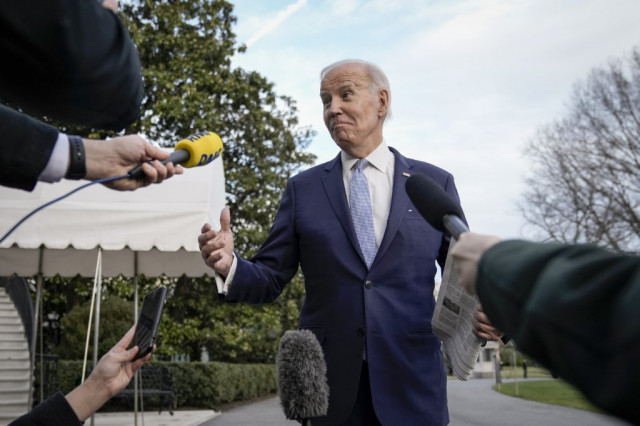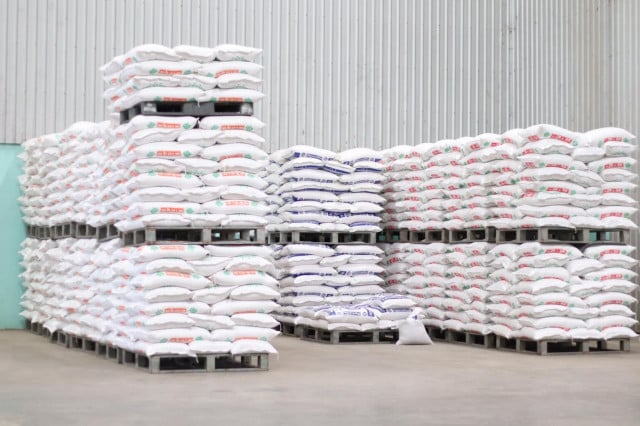Keeping safe during the second COVID-19 wave

- Sonny Inbaraj Krishnan and Irene Scott
- June 18, 2020 12:01 PM
Today (Friday, June 19) marks exactly 100 days since the World Health Organization declared COVID-19 as a pandemic on March 11.
As some countries begin to ease lockdowns, many communities may be feeling anxious about the possibility of a new wave of infections. Until the development of a vaccine or medicine, the SARS-CoV-2 virus that causes COVID-19 is likely to continue circulating in our communities.
Governments, on the other hand, are worried that the longer restrictions are in place the greater the likelihood of economic hardship, business failures and long-term unemployment, particularly for the young.
Several countries that have lifted coronavirus restrictions and reopened businesses, including China, have seen jumps in coronavirus cases, underscoring the challenges that may lie ahead. The recent flare-up of the number of COVID-19 cases in Beijing has stoked fears of a second wave of the respiratory disease which emerged in the central city of Wuhan late last year.
Indonesia posted a record number of coronavirus infections at the time of writing, sparking calls from local health experts for the country to slam the brakes on easing restrictions. India, too, reported a surge in COVID-19 cases as lockdown eased with 10,000 new coronavirus cases on June 11, 2020, with hospitals swamped in the worst-hit cities of Mumbai, New Delhi and Chennai.
An analysis published in Disaster Medicine and Public Health Preparedness in May 2020 urges countries that are thinking about easing lockdown measures to take a holistic perspective, thinking not only of the rates of infection in their own country but of the entire world, and to base any decision on scientific evidence. It warned that governments must be prepared for a potential second wave, “otherwise we will have to end up acknowledging that history repeats itself” – a reference to the H1N1 flu pandemic in 1918.
What is the second wave?
Second waves are a phenomenon of disease outbreaks where the number of people infected by virus may appear to decrease, and then increase again later in the same population or a different one.
Infectious diseases spread via contact between infectious and susceptible people. In the absence of any control measures, an outbreak will grow as long as the average number of people infected by each infectious person is greater than one.
We may also see a series of smaller ‘peaks’ rather than one large wave. The coronavirus pandemic hasn't affected all parts of the country in the same way, or at the same time. Some cities went into lockdown and quarantine at different times, and many countries are easing restrictions in phases and at their own pace. Some health experts have warned the lack of a unified reopening plan might help spread the coronavirus and could actually fuel a second wave as people travel from the hardest hit areas to places with far fewer infections.
COVID-19 is not the first disease where there are concerns about follow-up waves. During the H1N1 flu pandemic, a far deadlier second wave started in the fall months in 1918, followed by a third wave in winter-spring 1919. Fifty million people died during the 1918 flu pandemic, and though that flu is not the same as COVID-19, that pandemic does indicate how careful governments need to be when deciding to relax restrictions.
Will a second wave be more deadly?
Dr. Ali Khan, former director of the Office of Public Health Preparedness and Response at the US Centers for Disease Control and Prevention, in an interview with radio station NPR likens the second wave to a mountain range rather than a big peak, which means that there could be multiple COVID-19 outbreaks going on at the same time.
According to Dr. Khan, a lot of separate outbreaks will feel like sort of a second wave coming and this could be a severe strain on a country’s health system, and if lockdowns are again imposed it will be a blow to an already battered economy.
Complicating the situation will be the start of the flu season in the southern hemisphere already underway, where people’s immunity could be lowered due to the circulating influenza virus. In four months’ time, in the northern hemisphere it will be fall, and they will begin their flu season. In both hemispheres, people would be highly vulnerable to the coronavirus that causes COVID-19. Because of this, the second wave could be more deadly.
This is why the implementation of additional measures is necessary to minimize the risk of a second wave via community transmission. These include ramping up testing and contact tracing as well as a continued adherence to public health practices such as washing hands, social distancing and wearing face masks.
Trite advice but still very necessary
As lockdown measures are relaxed and people start to interact more, dealing with caution fatigue will be the biggest challenge. Differences in risk-taking behaviours will play out every day. Each person will decide whether and when to travel by plane, visit with friends, shop in malls, or eat in restaurants.
The Journal of the American Medical Association (JAMA) in an editorial states this will complicate how individuals will interact with others who may not share the same sense of risk, potentially straining relationships between family members, friends, and colleagues.
Regardless, there will be risks and we can’t help but need to keep reminding of the following:
1. Keep listening to national advice and guidance
Advice from the Ministry of Health and the WHO will give you the latest information about COVID-19, including what the symptoms are, what to do if you think you have it and how to reduce your chances of getting it.
2. Do not be complacent about hand hygiene
We might be tired of hearing it, but the fact remains: Touching surfaces, then your face, is likely to get you sick, and handwashing (or using hand sanitizer) is key to reducing spread of the virus. Scientists have found that the coronavirus could stay up to four hours on copper, up to 24 hours on cardboard, and up to two to three days on plastic and stainless steel.
3. Do not get complacent about physical distancing
While it is important to support local businesses struggling to get on their feet after the lockdowns, it is also important to make smart choices to limit person-to-person contact, which is the way the virus spreads.
4. Avoid throwing big parties
After staying in touch with your family and friends virtually through Zoom, FaceTime, Skype, Google Hangouts or WhatsApp, it’s only natural that you can’t wait to meet them physically with the easing of lockdowns. But to be safe you can defer, for the moment, hosting big reunion parties with family or friends. This will lower their chances of getting infected and passing the virus on to their loved ones, especially if they are elderly and in the high-risk category.
5. Wear a mask when using public transport
Use face masks if you have to use public transport because social distancing would be difficult. This follows the latest guidance from the WHO, which advises that face masks should be worn either for protection of healthy persons (worn to protect oneself when in contact with an infected individual) or for source control (worn by an infected individual to prevent onward transmission).
Finding the right balance
Without doubt, governments will be hard pressed to find the right balance between restarting their deflated economy and suppressing a recurrence of the virus.
There is an urgent need for strong government leadership now and the need for a proactive COVID-19 strategy to contain the virus while easing lockdowns. While many businesses cannot afford the economic damage caused by COVID-19, the post-lockdown if mishandled will be worse than the lockdown stage.
Sonny Inbaraj Krishnan is Internews regional humanitarian advisor COVID-19 and Irene Scott is director in Internews CONNECT: COVID-19 project. Internews CONNECT COVID-19 (http://internewscovid19.org) works with a network of partners in Asia responding to rumours and misinformation in the global ‘info-demic.’















